Fragments - A Lover's Discourse
80 Keywords About Dating
2008-2010, PAL 16:9, 15 min, Farbe, Stereo
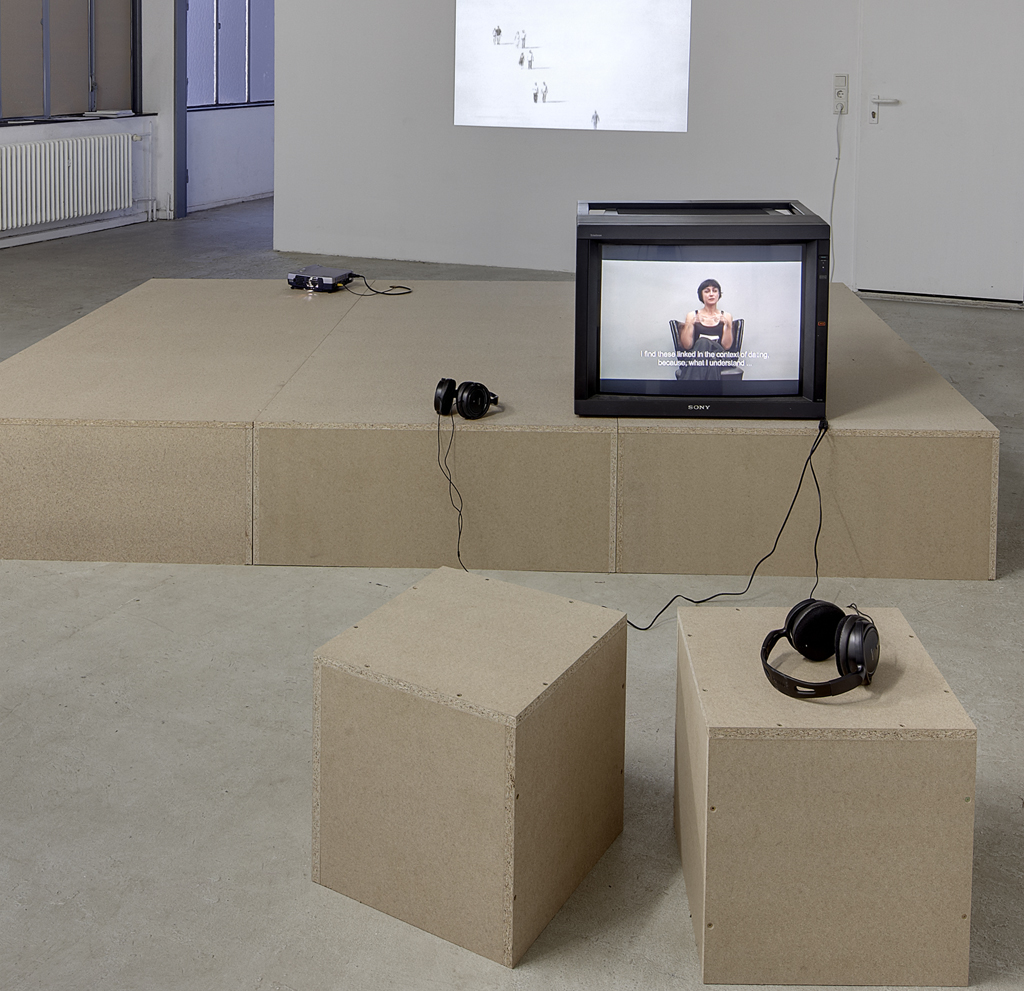
© Ausstellungsansicht: Hafen2 | interim.projekte, Offenbach am Main, 2010.
Foto: Eduardo Perez
[ to be engulfed ] - [ absence ] - [ adorable ] - [ affirmation ] - [ alteration ] - [ anxiety ] - [ annulment ] - [ askesis ] - [ atopos ] - (no classification) ] - [ waiting ] - [ to hide ] - [ pigeonholded ] - [ catastrophy ] - [ circumscribe ] - [ heart ] - [ fulfillment ] - [ compassion ] - [ to understand ] - [ behavior ] - [ connivance ] - [ contacts ] - [ contingencies ] - [ body ] - [ declaration ] - [ dedication ] - [ demons ] - [ dependency (depended from) ] - [ expenditure ] - [ disreality ] - [ drama ] - [ flayed ] - [ to write ] - [ errantry ] - [ embrace ] - [ exile ] - [ irksome ] - [ fade-out ] - [ faults ] - [ festivity ] - [ mad ] - [ embarrassment ] - [ Gradiva ] - [ habiliment ] - [ identification ] - [ image ] - [ unknowable ] - [ induction ] - [ informer ] - [ unbearable ] - [ outcomes ] - [ jealousy ] - [ I-love-you ] - [ languor ] - [ letter ] - [ loquela ] - [ magic ] - [ monstrous ] - [ silence ] - [ clouds ] - [ night ] - [ objects ] - [ obscene ] - [ crying ] - [ gossip ] - [ why ] - [ ravishment ] - [ regretted ] - [ encounter ] - [ reverberation ] - [ waking ] - [ scene ] - [ alone ] - [ signs ] - [ remembrance ] - [ suicide ] - [ thus ] - [ tenderness ] - [ union ] - [ truth ] - [ will-to-possess ]
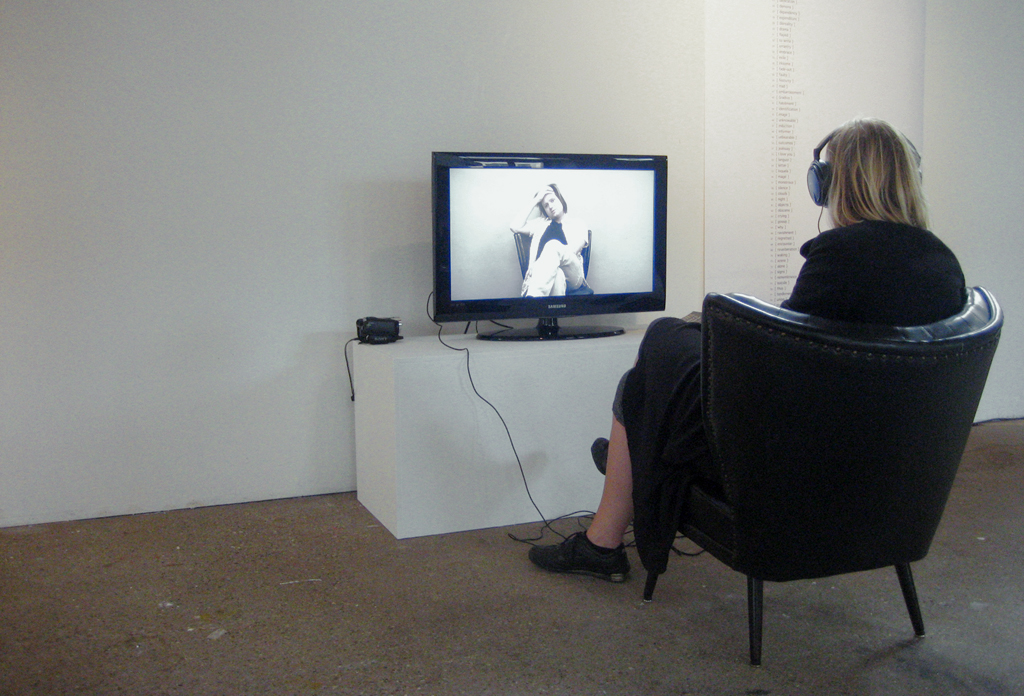
© Ausstellungsansicht: Dating, Casino Luxembourg, Forum d.Art Contemporain, Esche-zur-Alzette, 2008
=werk=25=f26
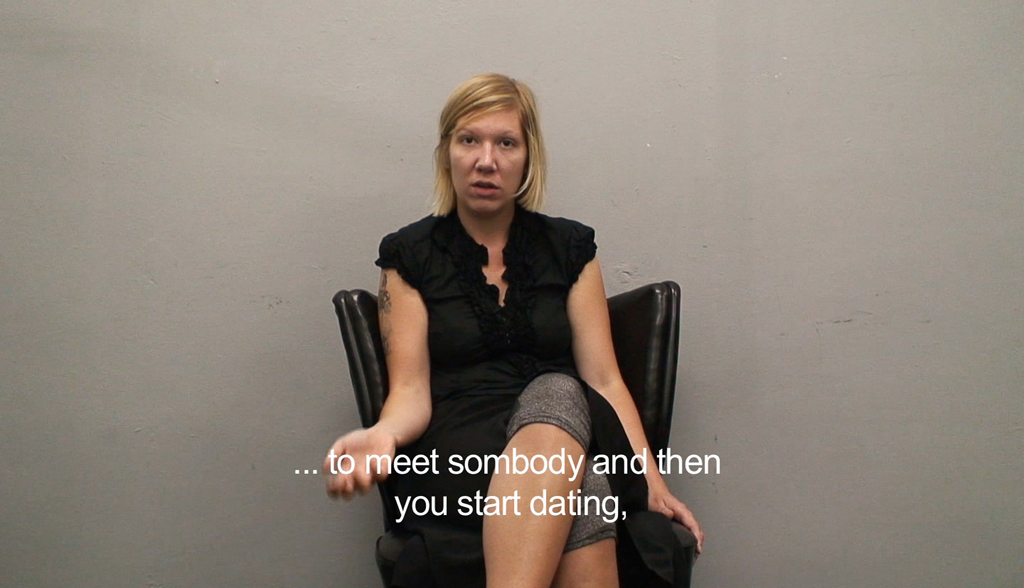
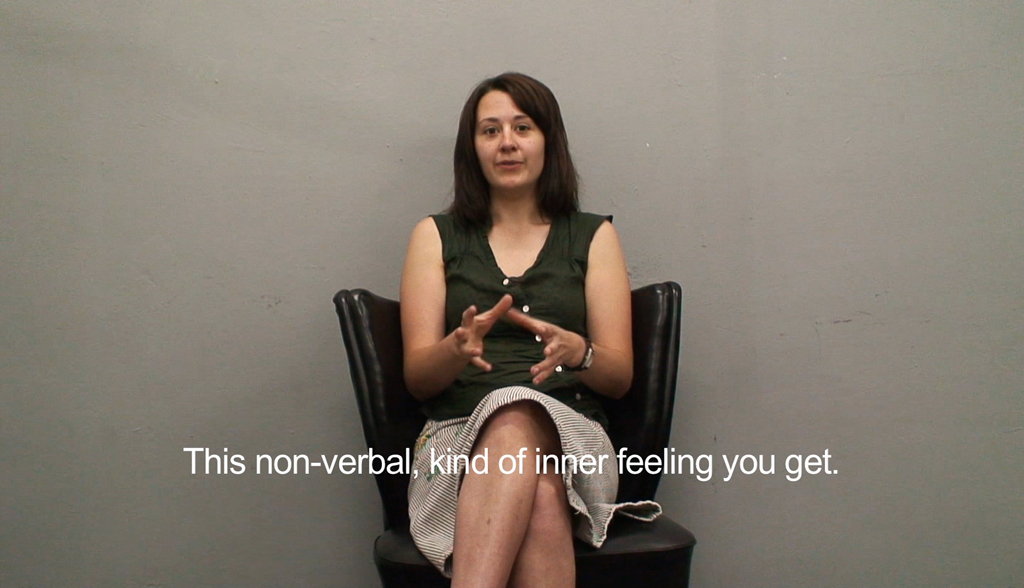
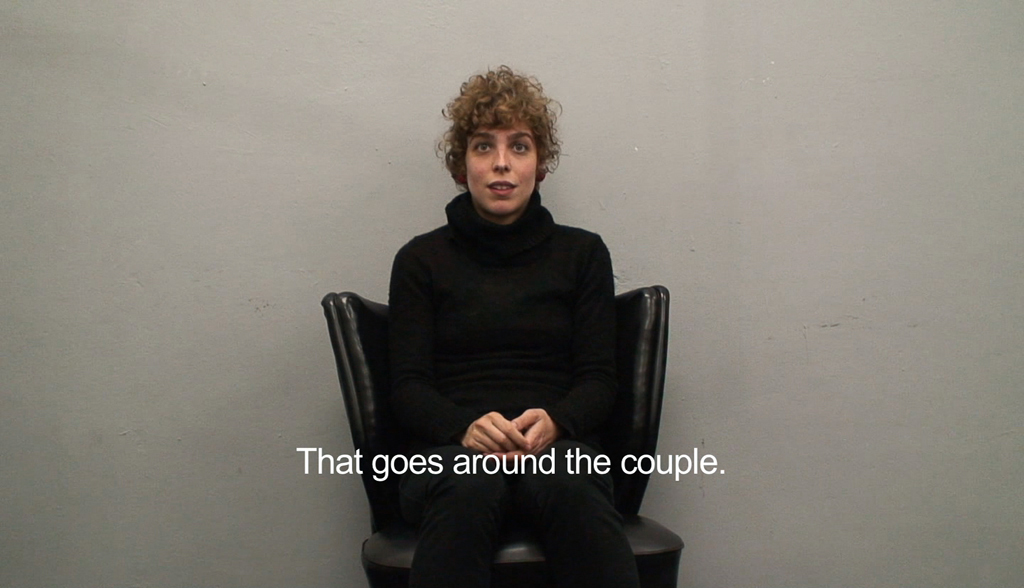
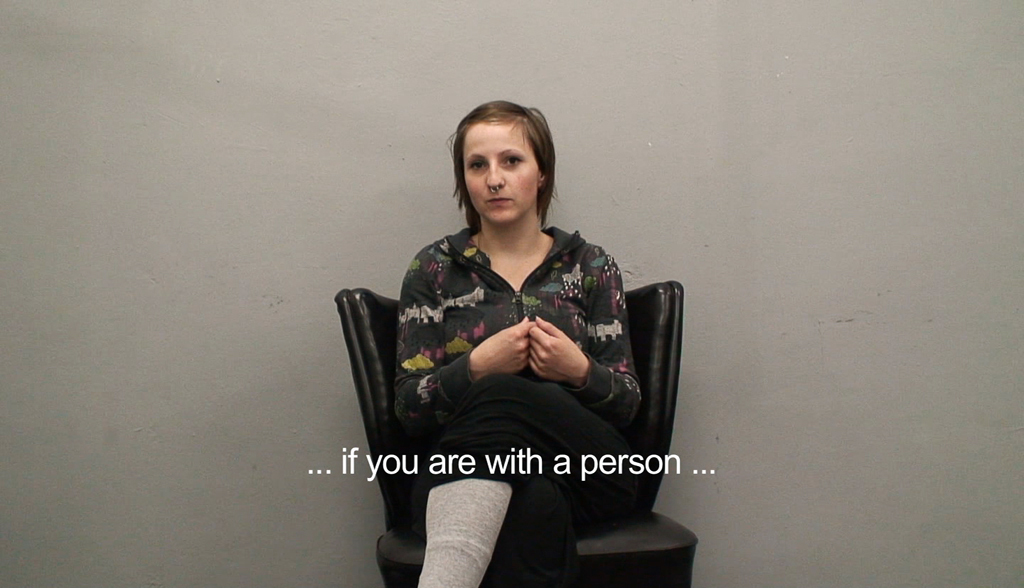
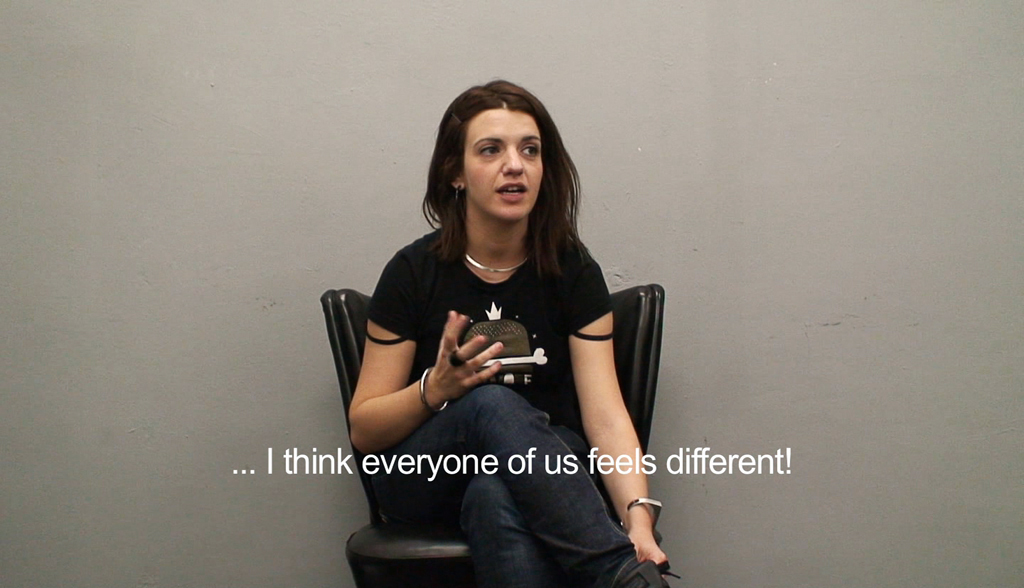
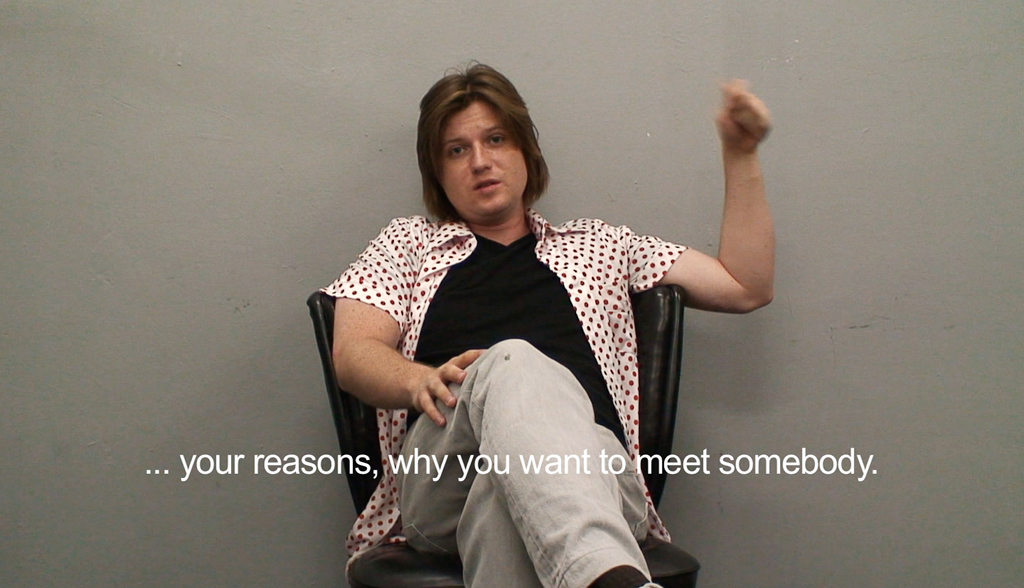
© Videostills
[VIDEO]: Fragments – A Lover's Discourse
ART WORKSHOP - DATING
28.06.-12.07.2008
Ort: Kulturfabrik, LU-Esch-sur-Alzette
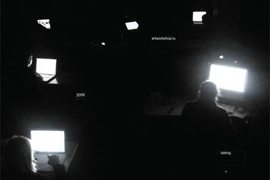
© Casino Luxembourg - Forum d'Art Contemporain, Poster
Workshop Leiter: Sylvie Blocher, Paul di Felice
Workshop TeilnehmerInnen: Kristoffer Ardena, Veronica Bellei, Claire Blundell-Jones, Ondrej Brody, Fabrice Génot, Bettina Hystad, Annja Krautgasser, Katharina Lackner, Anna Lopez-Luna, Stephanie Mold, Carl Palm, Giuliana Racco
Organisiert von: Casino Luxembourg - Forum d'Art Contemporain & University of Luxembourg and Kulturfabrik Esch
www.artworkshop.lu, www.casino-luxembourg.lu
The art workshop was initiated in 1998 by the Luxembourg artist Bert Theis (in close collaboration with Paul di Felice) during his art project for Manifesta 2 - European Biennial for Contemporary Art. Every Summer since then, Casino Luxembourg has been organising artist residencies, grouping together twelve young international artists around specific themes.
The 2008 edition of the art workshop focused on the theme of dating. Since the beginning of the 20th century, artists have pursued the social desire to integrate the Other / the 'stranger' in their artistic work. In numerous works of art, developing contacts and relationships with strangers has played an important part. Today, organising 'dates' may become a new way for artists to meet individuals s/he does not already know. The autonomously arranged 'date' has become a socially accepted and popular activity. The dating culture has changed drastically within the last ten years. The computer and the worldwide web have largely replaced personal mediating. Indeed, the spread of a 'call for answers' can nowadays be global, and its reach therefore wider than ever. Meanwhile, the lapse of time between an ad posted on websites and the reactions to it has sharply been reduced to an almost imperceptible time span. 'Dating' as a social activity and as a means of building up an intimate relationship often starts on the Internet. As such, it first of all takes place on the virtual level before potentially evolving to a real date with two physical protagonists.
Internet dating was therefore the theme of the art workshop 2008. The artists were invited to include Internet dating in some way or other in their artistic process. The artist could choose to put him(her)self either in the role of the hunter/seeker or in that of the reacting counterpart. S/he was either the direct witness to a dating adventure or used the electronic dating structure indirectly. The communication techniques such as giving information about oneself in one's profile and the art of asking questions are the condition of success for interpersonal relations. In addition, the propagation of fake information and the uncertainty of virtual intimacy open up new potentialities but also alternative emotional fields. The players on both sides had to decide whether to be honest or not. They had the possibility of playing a part, adopting different identities, testing people out, changing tactics… Interacting with the other means exploring different aspects of one's personality and practising social contacts.
During their residency, the artists were free to observe the interpersonal aspects of online dating systems, to invent new strategies, to divert the usual schemes and to explode the given frames. Dating can be considered a game where the boundaries between private and public are displaced. Therefore, communication can be very woolly: risks and coincidences are always part of the game.
Metaphorically, the art workshop 2008 did in a way work as a dating or a meeting platform where twelve young international artists and art students got to know each other during a two-week residency. The twelve participants were selected on file (only digital documents were accepted) and participated in the workshop in Esch-sur-Alzette and Luxembourg. The workshop's purpose was to create a context where pluralism and cultural differences melt down, and where reflections and experiences of 'art in progress' ripen and emerge. The works thus produced were shown in an exhibition at the end of the artists' stay
With the support of:
Casino Luxembourg - Forum d"art contemporain, L. University of Luxembourg, L. Centre Culturel Kulurfabrik, Esch-sur-Alzette, L. Ministère de la Culture, de l"Enseignement Supérieur et de la Recherche, L.